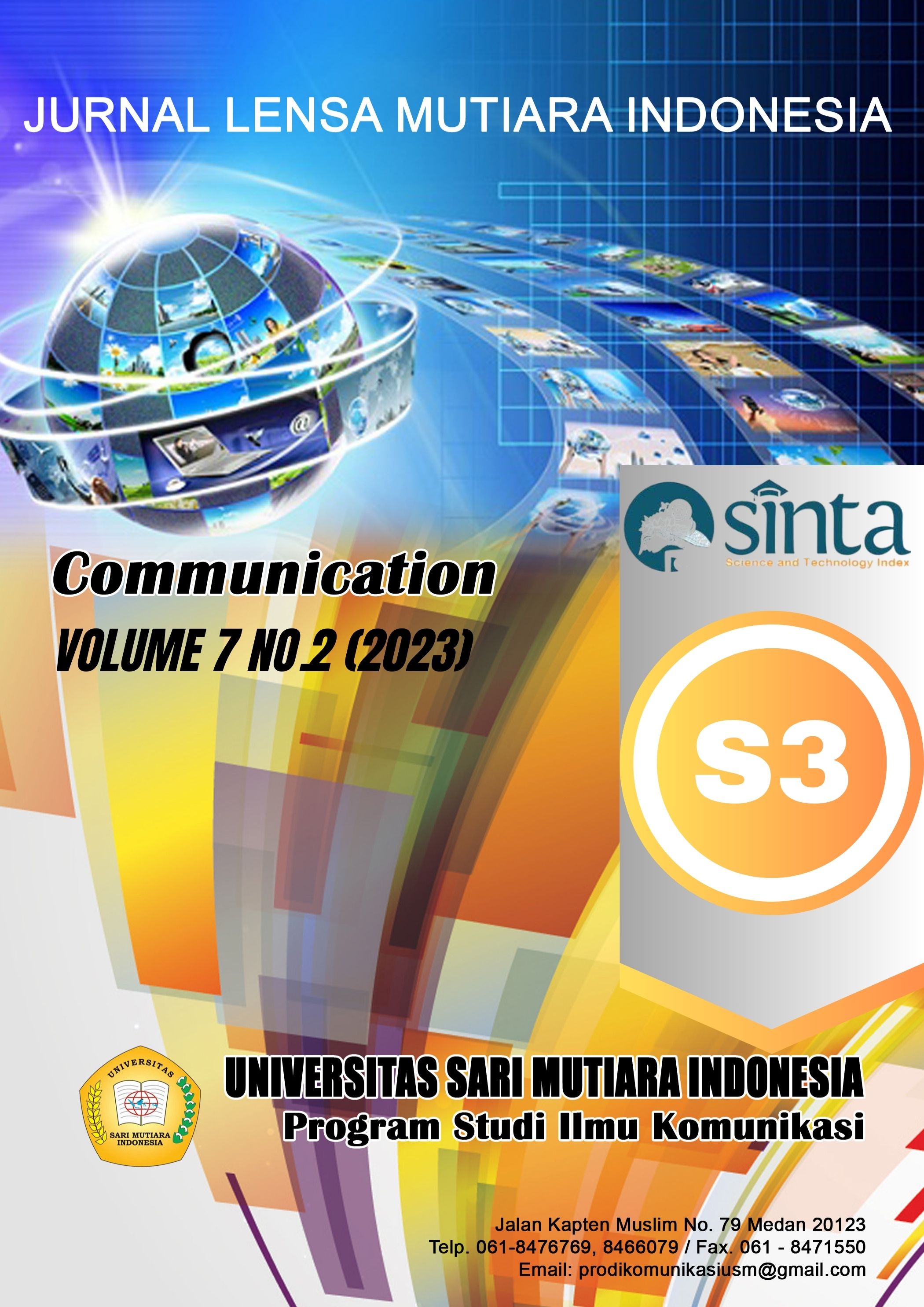Analisa Jejaring Sosial dan Retorika Deliberatif
Main Article Content
Abstract
The aim of this research is to examine the phenomenon of deliberative rhetoric using the hashtag #SepakatDamai on Twitter to motivate the public. After the tragedy of riots between football supporters at the Kanjuruhan Stadium, it succeeded in triggering public attention and became a trending topic on Twitter. Many football supporters and the general public take an active role in voicing peace to reduce fighting. Through the hashtag #SepakatDamai, the public is persuaded to get involved in carrying out peace agreement actions so that, in the future, there will no longer be any hostility between football supporters. In the end, tweets from actors involved in peaceful demonstrations form social network patterns that can be utilized in deliberative rhetorical actions. The hashtag #SepakatDamai plays a role in mobilizing public opinion support for the peace agreement between football supporters. This discussion emerged spontaneously on Twitter and was widely discussed until it became a trending Twitter topic. This research uses the Social Network Analysis (SNA) method and then connects it with the Digital Movement of Opinion and Rhetoric Theory. This research stage began by determining the most dominant actor in the hashtag #SepakatDamai. After that, the researcher carried out an analysis of the posts made by that actor to determine the rhetorical phenomenon. The results of this research found that the hashtag #SepakatDamai succeeded in mobilizing public opinion about the football supporters' peace agreement. The most dominant actor is @mafiawasit, with a network structure value of degree 1.471, closeness 1.0, betweenness 0.000238, and eigenvector 1.0. The @mafiawasit account carries out deliberative rhetoric for the public by showing the facts that have occurred regarding the peace agreement between football supporters through posts on Twitter and retweeting similar posts so that the public follows the peaceful demonstration.
Downloads
Article Details

This work is licensed under a Creative Commons Attribution-NonCommercial-ShareAlike 4.0 International License.
References
Barisione, Mauro, and Andrea Ceron. 2017. “A Digital Movement of Opinion? Contesting Austerity Through Social Media.” In Social Media and European Politics, 77–104. Palgrave Macmillan UK. https://doi.org/10.1057/978-1-137-59890-5_4.
Barisione, Mauro, Asimina Michailidou, and Massimo Airoldi. 2019. “Understanding a Digital Movement of Opinion: The Case of #RefugeesWelcome.” Information Communication and Society 22 (8): 1145–64. https://doi.org/10.1080/1369118X.2017.1410204.
Berg, Sebastian, Tim König, and Ann Kathrin Koster. 2020. “Political Opinion Formation as Epistemic Practice: The Hashtag Assemblage of #metwo.” Media and Communication 8 (4): 84–95. https://doi.org/10.17645/mac.v8i4.3164.
Chen, Emily, Kristina Lerman, and Emilio Ferrara. 2020. “Tracking Social Media Discourse about the COVID-19 Pandemic: Development of a Public Coronavirus Twitter Data Set.” JMIR Public Health and Surveillance 6 (2). https://doi.org/10.2196/19273.
Eriyanto. 2021. Analisis Jaringan Media Sosial, Dasar-Dasar Dan Aplikasi Metode Jaringan Sosial Untuk Membedah Percakapan Media Sosial. Jakarta: Kencana.
Eriyanto, Eriyanto. 2020. “Hashtags and Digital Movement of Opinion Mobilization: A Social Network Analysis/SNA Study on #BubarkanKPAI vs #KamiBersamaKPAI Hashtags.” Jurnal Komunikasi Indonesia 8 (3). https://doi.org/10.7454/jki.v8i3.11591.
Febrianti, Indri, MKhairul Anam, Program Studi Teknik Informatika, and Stmik Amik Riau. n.d. “Tren Milenial Memilih Jurusan Di Perguruan Tinggi Menggunakan Metode Social Network Analysis Millennial Trends to Choose Majors In College Using Social Network Analysis Method.” Agustus. Vol. 19.
Griffin, Em, Andrew Ledbetter, and Glenn Sparks. 2019. A FIRST LOOK AT COMMUNICATION THEORY. 10th ed.
Gruzd, A, P Mai, and A. Kampen. 2016. How-to for Using Netlytic to Collect and Analyze Social Media Data: A Case Study of the Use of Twitter During the 2014 Euromaidan Revolution in Ukraine. London: Sage Publications.
Himelboim, Itai. 2017. “Social Network Analysis (Social Media).” In The International Encyclopedia of Communication Research Methods, 1–15. Wiley. https://doi.org/10.1002/9781118901731.iecrm0236.
Kaun, Anne, and Julie Uldam. 2018. “Digital Activism: After the Hype.” New Media and Society. SAGE Publications Ltd. https://doi.org/10.1177/1461444817731924.
Littlejohn, W Stephen, A Karen Foss, and John G Oetzel. 2017. “THEORIES OF HUMAN COMMUNICATION Eleventh Edition.”
Mochamad Sadheli. 2022. “Sepakat Damai Suporter Persis-PSIM Hingga Persija-Persib Di Mandala Krida.” Kompas.Com, 2022. https://www.kompas.com/sports/read/2022/10/05/08155708/sepakat-damai-suporter-persis-psim-hingga-persija-persib-di-mandala-krida?page=all.
Nidia Zuraya. 2022. “Ribuan Suporter Sepak Bola Nasional Sepakat Damai Di Yogyakarta.” Republica.Co.Id, 2022. https://news.republika.co.id/berita//rj8qu0383/ribuan-suporter-sepak-bola-nasional-sepakat-damai-di-yogyakarta?
Sánchez, Damien M. 2018. “Concientization among People in Support and Opposition of President Trump.” Educational Technology & Society. Vol. 21.
Tjahyana, Lady Joanne. 2020. “GERAKAN OPINI DIGITAL #TRUEBEAUTY PADA TWITTER UNTUK PEMERAN FILM ADAPTASI KOMIK WEBTOON.” http://jurnal.utu.ac.id/jsource
West, Richard, and Lynn H Turner. 2017. Pengantar Teori Komunikasi : Analisis Dan Aplikasi. Jakarta: Salemba Humanika.
